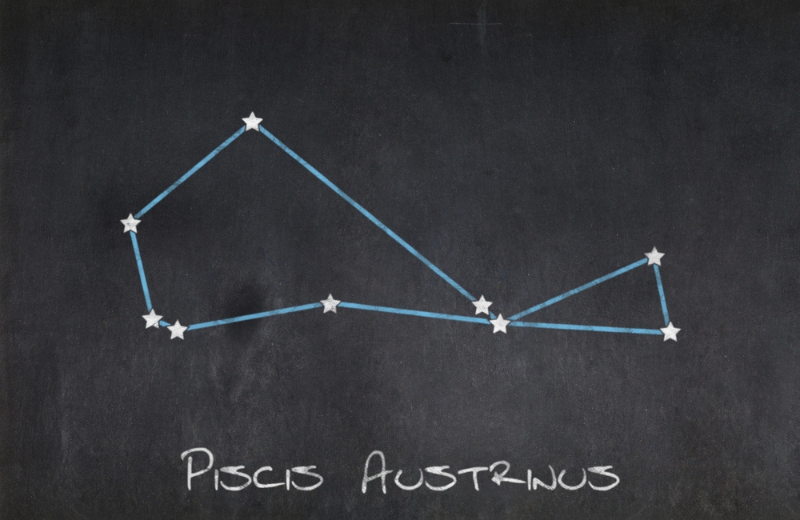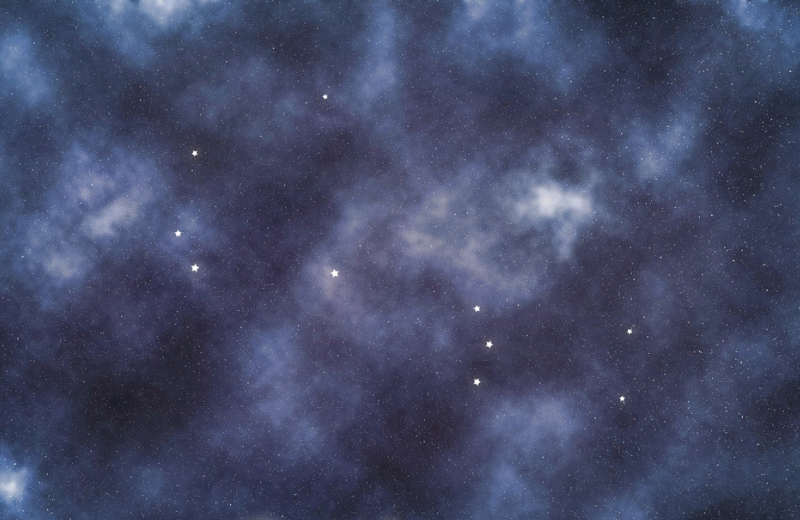If you're curious about constellations and their stars, Piscis Austrinus, the Southern Fish, is a fascinating one to explore. Known for its brilliant star Fomalhaut, it’s steeped in mythology and astronomy. Whether you're a seasoned stargazer or just starting to learn about the cosmos, this guide will introduce you to Piscis Austrinus and its captivating features.
Jump to:
- What is the Piscis Austrinus Constellation?
- What Does Piscis Austrinus Look Like?
- How Far is the Piscis Austrinus Constellation from Earth?
- The Piscis Austrinus Constellation Myth
- Piscis Austrinus' Stars
- Nebulae in the Piscis Austrinus Constellation
- Finding Piscis Austrinus in the Sky
- Fun Facts About Piscis Austrinus
- Study Astronomy for £29
Recommended for you!
Best SellersWhat is the Piscis Austrinus Constellation?
The Piscis Austrinus constellation is one of the lesser-known constellations in the night sky. It’s located in the southern hemisphere and is known for its brightest star, Fomalhaut. This constellation has been observed since ancient times and holds a place in both mythology and astronomy. Its name, Piscis Austrinus, translates to "Southern Fish" in Latin, and it has a close association with aquatic themes in various cultures.
What Does Piscis Austrinus Look Like?
Piscis Austrinus is a relatively small constellation, but it is distinct due to the brilliance of Fomalhaut, its first-magnitude star. The constellation resembles a fish lying on its side, with Fomalhaut representing its mouth. The other stars in Piscis Austrinus are dimmer, making it a bit challenging to spot in light-polluted areas. When viewed under clear skies, it appears as a collection of faint stars forming a loose outline of a fish.

How Far is the Piscis Austrinus Constellation from Earth?
The Piscis Austrinus constellation spans a vast distance in space, but its most prominent star, Fomalhaut, is located approximately 25 light-years from Earth. This makes Fomalhaut one of the closest stars visible to the naked eye, offering astronomers and stargazers an excellent opportunity for observation. Other stars within the constellation vary significantly in distance, ranging from dozens to hundreds of light-years away.
The Piscis Austrinus Constellation Myth
Like many constellations, Piscis Austrinus is steeped in mythology. In ancient Greek lore, the constellation represents a fish that saved the goddess Aphrodite and her son Eros. When they were fleeing from the monster Typhon, the fish carried them to safety. This myth connects Piscis Austrinus to the story of Pisces, its celestial counterpart in the northern hemisphere, which depicts two fish tied together by a cord.
Piscis Austrinus' Stars

- Fomalhaut, The First-Magnitude Star: The standout feature of Piscis Austrinus is Fomalhaut, one of the brightest stars in the entire sky. It shines with a bluish-white hue and is part of a triple star system. Fomalhaut is unique because it is surrounded by a vast debris disk, which has been studied extensively for clues about planet formation.
- Other Stars in Piscis Austrinus: Although Fomalhaut dominates the constellation, Piscis Austrinus contains several other notable stars, including Beta Piscis Austrini and Epsilon Piscis Austrini. While dimmer than Fomalhaut, these stars contribute to the constellation's overall shape and help define its aquatic theme.
Nebulae in the Piscis Austrinus Constellation
While Piscis Austrinus is not particularly rich in nebulae, its location in the sky places it near areas of interest for deep-sky observers. The constellation lies close to the boundary of the Aquarius constellation, which houses the famous Helix Nebula. Observers often use Fomalhaut as a guide to locate nearby celestial objects.
Finding Piscis Austrinus in the Sky

To spot Piscis Austrinus, you'll need to look to the southern skies. The constellation is best seen during the late summer and early autumn months, especially in regions below the equator or closer to the tropics.
To find it, locate its brightest star, Fomalhaut, which is often called the "Lonely Star" due to its isolation from other bright stars in the vicinity. Fomalhaut acts as a beacon, making it easier to identify the constellation despite its relatively faint stars.
Fun Facts About Piscis Austrinus
- Ancient Origins: Piscis Austrinus was first catalogued by the Greek astronomer Ptolemy in the 2nd century.
- Aquatic Theme: Its aquatic connection links it to the neighbouring constellations of Aquarius and Capricornus.
- Pronunciation: Piscis Austrinus is pronounced as "PIE-sis aw-STRY-nus," though variations exist depending on regional accents.
- Planetary Discoveries: Fomalhaut's debris disk has been studied for evidence of exoplanets, with one planet, Fomalhaut b, observed directly in 2008.
Recommended for you!
Best SellersStudy Astronomy for £29
If the Piscis Austrinus constellation has sparked your curiosity, why not explore more about the stars and the cosmos with our Astronomy Diploma Course at Centre of Excellence? This course offers a detailed understanding of the universe, from constellations and star types to the fundamentals of space observation. Perfect for all budding astronomers, the course is available for a discounted price of £29.













